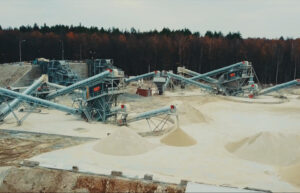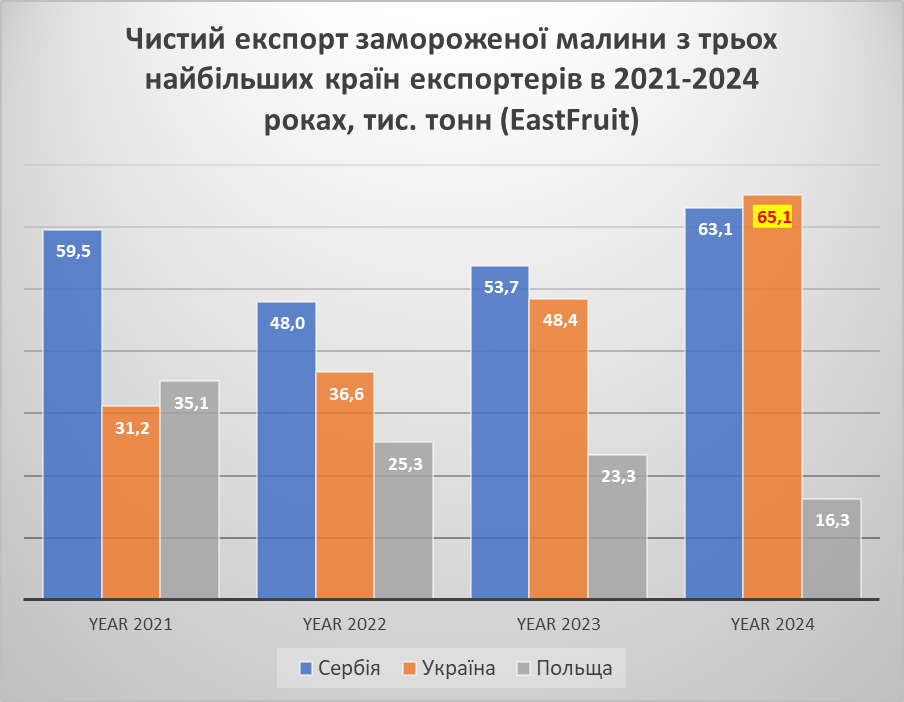
The Bio-Lan Industrial Park, which is being built in Ternopil region, will help increase grain processing capacity and stimulate the development of alternative energy sources in the region, said Vyacheslav Nehoda, head of the Ternopil Regional Military Administration.
According to the Ternopil Regional Military Administration’s Facebook post, the functional purpose of the Bio-Lan industrial park is the processing industry – bioethanol and biogas production. The planned real estate objects include office, retail, industrial and warehouse premises; engineering buildings.
“The construction of the main engineering and transport infrastructure of the industrial park (access roads and railways, water supply and sewage networks and facilities, gas supply), an elevator complex and warehouse buildings with an oil transfer station, reconstruction of the administrative building, as well as the construction of the main facilities for bioethanol production and biogas production are currently underway,” the UBA said.
The industrial park is expected to create more than 200 jobs, attract EUR110 million in investments, and provide UAH 7 million in local budget revenues annually.
Four industrial parks are currently registered in Ternopil region. Three more will be established by the end of the year.

In 2024, insurance company PZU Ukraine attracted UAH 2.248 billion in premiums, which is UAH 379 million, or 20%, more than in 2023, according to a press release from the insurer.
According to the company, the largest increase in payments at the end of the year was recorded in the following segments: health insurance – by 37%, or UAH 88 million, MTPL – by 28% (+UAH 138 million), hull insurance increased by 22% (+UAH 80 million), Green Card has an increase of 11% (UAH 54 million), and assistance +10% (UAH 9 million).
The share of MOTPL in the company’s portfolio amounted to 28%, or UAH 637 million of payments, Green Card – 24% (UAH 543 million of insurance premiums), CASCO – 20% (UAH 450 million).
In turn, the share of health insurance in the company’s portfolio amounted to 15%, and the company collected UAH 326 million in payments under these contracts in 2024.
PZU Ukraine’s revenues from other insurance contracts amounted to UAH 291 million, or 13% of total revenues.
In 2024, the total amount of insurance payments amounted to UAH 1.048 billion, which is 49% more than in 2023.
Last year, the company settled insurance claims in the amount of UAH 226 million in the motor hull segment, UAH 327 million in the MTPL segment, UAH 176 million under Green Card contracts, and UAH 235 million in VHI.
In addition, the insurer reports that the financial result before taxation for 2024 amounted to UAH 19 million, according to the auditor’s report.
PZU Ukraine is supported by one of the largest insurance groups in Central and Eastern Europe, PZU Group, which includes the parent company of PZU Ukraine, PZU S.A.

Keramprom PrJSC (Artemivka, Donetsk Oblast), a clay producer in Donetsk Oblast, earned UAH 33 million 457,947 thousand in 2024, up 10.93 times from UAH 3 million 59,435 thousand in 2023.
According to the agenda of the company’s general shareholders’ meeting to be held remotely on April 18, published in the information disclosure system of the National Securities and Stock Market Commission (NSSMC), the shareholders are to consider the CEO’s report on the company’s financial and economic performance in 2024 and make a decision based on the results of its consideration.
The shareholders will also have to consider the auditor’s report for 2024 and approve appropriate measures based on it, as well as approve the results of financial and economic activities for the past year, consider the report of the Supervisory Board for this period and make appropriate decisions.
Among other things, the shareholders will consider the distribution of profits for 2024, re-elect members of the SB, and give preliminary consent to the company’s significant transactions.
The draft resolutions, a copy of which is available to Interfax-Ukraine, propose to amend the resolution of the remote extraordinary general meeting of shareholders held on November 22, 2024, by setting it out in a new wording. In doing so, the shareholders are proposed to choose between two options. In particular, to pay dividends on the company’s ordinary registered shares in the amount of UAH 15 million 1,059 thousand from the company’s retained earnings and approve the amount of dividends per ordinary registered share in the amount of UAH 47.77. Or, part of the company’s retained earnings in the amount of UAH 20 million should be allocated to pay dividends with the approval of the amount of dividends per ordinary registered share in the amount of UAH 63.69.
Keramprom PrJSC (Artemivka, Donetsk region) was established in 1997 and is engaged in clay production. The company’s production capacity is up to 300 thousand tons per year. According to the company’s website, the company is currently developing the Chilne white refractory clay deposit in Kostiantynivskyi district of Donetsk region.
According to the third quarter of 2024, the company’s shares are owned by Valeriy, Ihor, and Borys Bevzenko (49.8708%, 30.2515%, and 8.9999%, respectively), Anatoliy and Larysa Popov (5.1757% each).
The authorized capital of PrJSC “Keramprom” is UAH 25.75 million.

European and international financial institutions are ready to invest more than 10 billion euros in the development of the Trans-Caspian transport corridor, EU High Representative for Foreign Affairs Kaja Kallas said at a press conference in Ashgabat, Turkmenportal.com reported.
“The development of the Trans-Caspian Transport Corridor is a major ongoing project. European and international financial institutions are ready to invest more than 10 billion euros in this project,” Kallas said during a press conference on the 20th European Union-Central Asia Ministerial Meeting held in Ashgabat on March 27.
Kallas emphasized the growing desire for cooperation between the EU and Central Asian countries.
The EU plans to expand cooperation in various areas, she said.
Kallas emphasized the development of youth exchanges and strengthening contacts in business and academia.

According to EastFruit analysts, a historic event took place in 2024: Ukraine, which practically did not export frozen raspberries ten years ago, for the first time became the world leader in terms of net exports of this berry, surpassing not only Poland but also Serbia, the long-time leader in this segment.
In 2024, according to trade statistics, Ukraine’s exports of frozen raspberries reached a record 65 thousand tons, showing a 34% increase over the year. This was a much faster increase than any other major exporter. In general, over the past three seasons, Ukraine’s exports of frozen raspberries have more than doubled, while Serbia has maintained its performance at the same level and Poland has reduced its exports by 24%.
It is worth noting that Ukraine imports only small volumes of raspberries, unlike Serbia and especially Poland, which actively purchase them abroad. In Polish exports, the share of imported raspberries already exceeds 52%, with the bulk of Poland’s purchases coming from Ukraine. In fact, almost half of the frozen raspberries exported by Poland are of Ukrainian origin. It is the affordable Ukrainian raspberries that allow this country to maintain its position among the world market leaders.

If we analyze net exports, Ukraine supplies 65 thousand tons of frozen raspberries to foreign markets, while Poland supplies only about 16 thousand tons. Thus, in 2024, Ukraine exported four times more frozen raspberries than Poland!
Interestingly, in terms of total exports of frozen raspberries, Ukraine is still slightly behind Serbia. In 2024, Serbia exported 67.7 thousand tons of raspberries, while Ukraine exported 65.1 thousand tons. However, Serbia imported 4.7 thousand tons for further re-export, which reduced its net exports to 63 thousand tons, which is 2 thousand tons less than Ukraine.
“The key step to consolidating Ukraine’s global leadership in frozen raspberry exports will be further diversification of sales markets. To do this, Ukrainian exporters need to improve the quality of raspberries and invest in their processing and marketing, which will help to increase the average export price. Higher export revenues could be used to improve products, increase their quality, and expand production. Currently, many Ukrainian producers of frozen berries export to Poland the raw materials that Polish processors sort, pack and re-export, leaving the added value in their country,” says Andriy Yarmak, economist at the FAO Investment Department.

The process of diversification of frozen raspberry exports from Ukraine is already underway. It is noteworthy that Poland played a significant role in this. Farmers’ protests against imports of raspberries and other agricultural products forced Ukrainian exporters to look for new markets, which turned out to be much more profitable than the Polish market. The additional income of Ukrainian raspberry producers was reinvested in expanding production and processing in Ukraine, which accelerated Ukraine’s ascent to the global raspberry export Olympus.
Between 2022 and 2024, Poland’s share of Ukrainian raspberry exports decreased from 63% to 35%. Instead, the share of Germany, the Czech Republic, Austria, and France, key markets for Polish exporters, more than doubled to 48% of direct exports from Ukraine. Ukraine is actively gaining market share in Poland, which has been made possible by improving the quality of its products and the level of their processing.
Over the past three years, Ukraine’s exports of frozen raspberries to Germany have increased 4.5 times, to the Czech Republic 4.2 times, to Austria 33 times, and to France twice. In 2024, Ukraine also exported over 2,000 tons of raspberries to Belgium, Italy, and Lithuania for the first time.
In addition, Ukraine is rapidly increasing its exports of frozen raspberries to Canada and the United States, markets that offer much higher prices than the EU. Three years ago, Ukraine did not supply products to these countries, and now it often outperforms its Polish competitors in terms of exports.
Among the unusual export destinations for frozen raspberries, it is worth noting the first commercial deliveries of Ukrainian products to Argentina and Saudi Arabia.
Given the high prices for raspberries in the previous season, EastFruit analysts predict that in 2025 and in the 2025/26 season, Ukraine will update its raspberry export records and strengthen its leadership. In particular, already in 2025, Ukraine may overtake Serbia in terms of total exports of frozen raspberries.

The Congressional Budget Office (CBO) forecasts a significant increase in the US national debt over the next 30 years. According to CBO’s forecast, the national debt will reach 100% of GDP in the current fiscal year and increase to a record 107% of GDP in fiscal year 2029. By 2025, the figure is expected to reach 156% of GDP.
“Rising public debt will slow economic growth, lead to higher interest payments to foreign debt holders, and pose significant risks to budget and economic projections,” the CBO said in its review.
Earlier this week, international rating agency Moody’s warned that import duties imposed by US President Donald Trump could prevent the country from getting its growing budget deficit under control.
The CBO expects the US budget deficit to increase to 7.3% of GDP by 2055 from 6.4% of GDP in 2024. The forecast for 2025 is 6.2% of GDP.
The CBO forecast assumes a slowdown in US economic growth this year to 2.1% from 2.8% in 2024. Earlier, Experts Club and Maksim Urakin released a video analysis of the state of debt in the world, see more details on the YouTube channel: https://youtu.be/gq7twYrWuqE